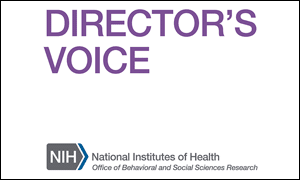Introduction
In a recent article, Jane M. Simoni, PhD, the NIH Office of Behavioral and Social Sciences Research (OBSSR) Director, explored the implications of President Joe Biden’s Executive Order on women’s health research and innovation. Signed in March 2024, this directive represents a landmark initiative to enhance and expand women’s health research, addressing crucial areas like menopause and midlife health through significant investments and interdisciplinary collaboration.
Major Challenges Addressed by the Executive Order
The Executive Order targets five key areas to advance women’s health:
- Prioritizing and Enhancing Investments: This includes creating a Fund for Women’s Health Research at the NIH to support cutting-edge research.
- Fostering Innovation and Discovery: Encouraging new research initiatives across various disciplines.
- Expanding and Leveraging Data Collection and Analysis: Improving data systems to better capture women’s health issues.
- Strengthening Coordination, Infrastructure, and Training: Enhancing the research ecosystem to support women’s health.
- Improving Women’s Health Across the Lifespan: Focusing on health issues that emerge at different stages of life, particularly in midlife and older age.
Role of Behavioral and Social Science Research
Dr. Janine Clayton, Director of the Office of Research on Women’s Health (ORWH), emphasized the importance of integrating behavioral and social sciences into women’s health research. While biological factors are crucial, understanding how these interact with external social factors is essential for comprehensive health outcomes. Social determinants, such as access to healthy foods and safe environments for physical activity, significantly influence women’s health behaviors and outcomes. Behavioral and social science research helps develop interventions that address these determinants, promoting health equity and improving outcomes for women.
Linking Women’s Health Research to Health Equity
Equity-focused research necessitates an intersectional approach that considers diverse social factors affecting women’s health. Tailoring health improvement strategies to account for differences among groups is critical. For instance, cultural perceptions of menopause and barriers faced by racial and ethnic minority women highlight the need for nuanced, culturally competent research and interventions. The Executive Order supports such equity-focused research, emphasizing the inclusion of women from diverse backgrounds in clinical trials.
Enhancing Recruitment and Retention in Clinical Trials
Behavioral and social sciences play a pivotal role in understanding and mitigating barriers to clinical trial participation among women, especially those from U3 populations. Factors such as caregiving responsibilities, work commitments, and safety concerns can hinder participation. Addressing these through informed, inclusive strategies can improve recruitment and retention. For example, understanding and addressing the specific concerns of African American women regarding clinical research can enhance their participation rates.
Importance of Implementation Science
Implementation science is essential for translating research findings into practice effectively. By integrating user-centered design and community-based participatory research, the NIH aims to develop and implement technological and data-driven strategies that reduce barriers to clinical trial participation. This ensures that innovative solutions are accessible and acceptable to women, ultimately improving their engagement in research.
Summary
The Executive Order signifies a robust commitment to advancing women’s health research by addressing key challenges, promoting behavioral and social science integration, and focusing on equity and implementation science to enhance participation and outcomes for all women.
Read the Full OBSSR Director’s Voice Blog and visit the White House fact sheet on the executive order for more insight.







